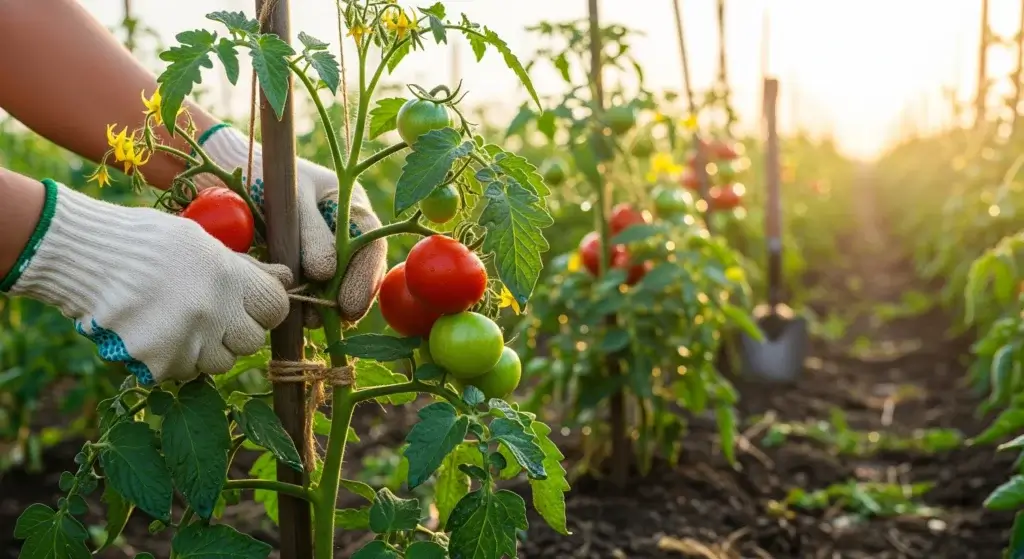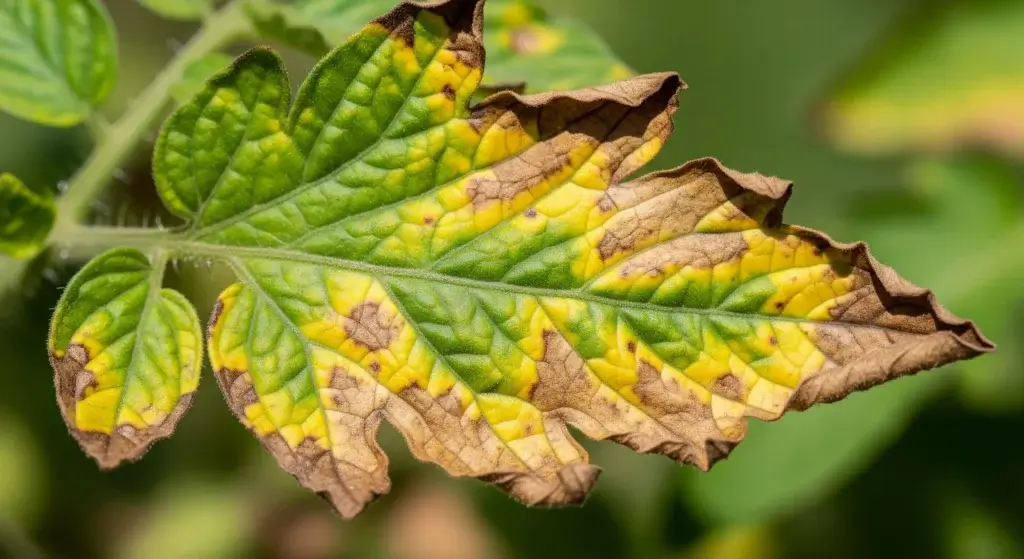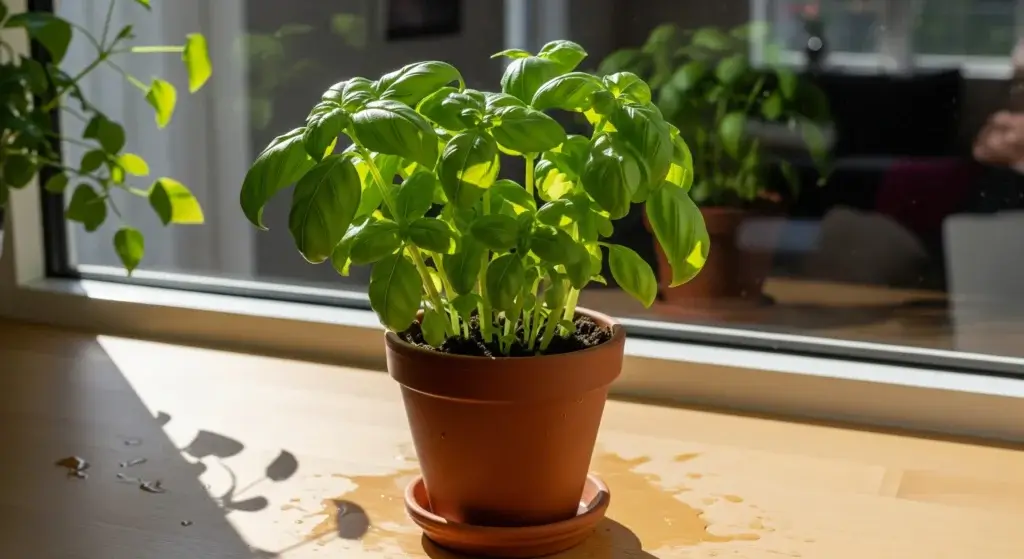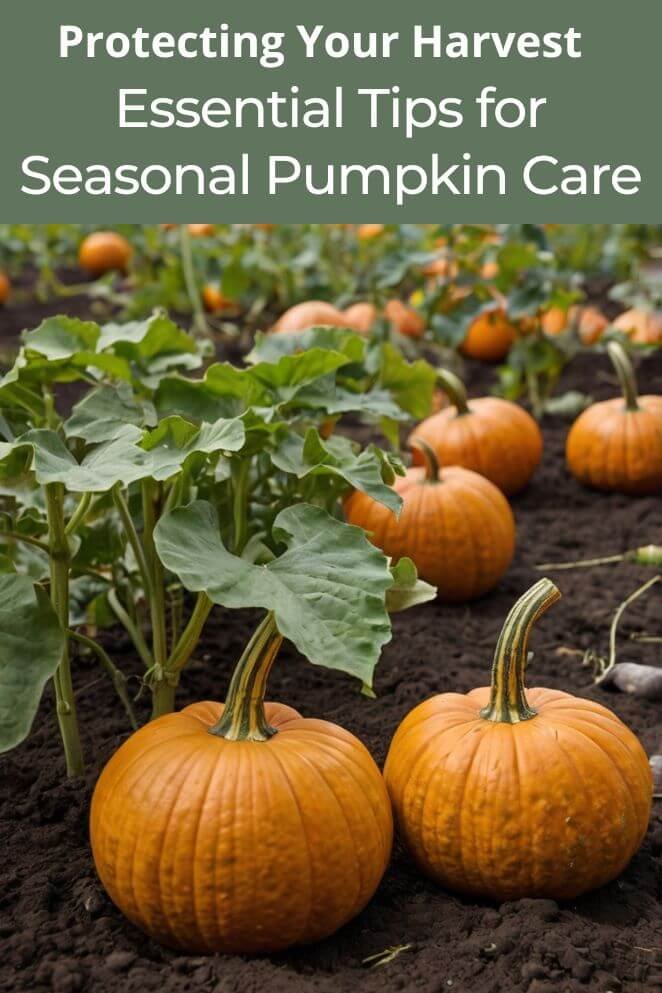
Pumpkins are not just for Halloween; they’re a gardener’s delight and a staple in many kitchens worldwide.
But growing perfect pumpkins takes more than just planting seeds and waiting.
With seasonal care and proper techniques, you can ensure a bountiful harvest of these versatile fruits.
This guide covers everything you need to know about pumpkin care throughout the year, from planting in spring to preparing your garden for next year during winter.
Spring: Planting and Early Care
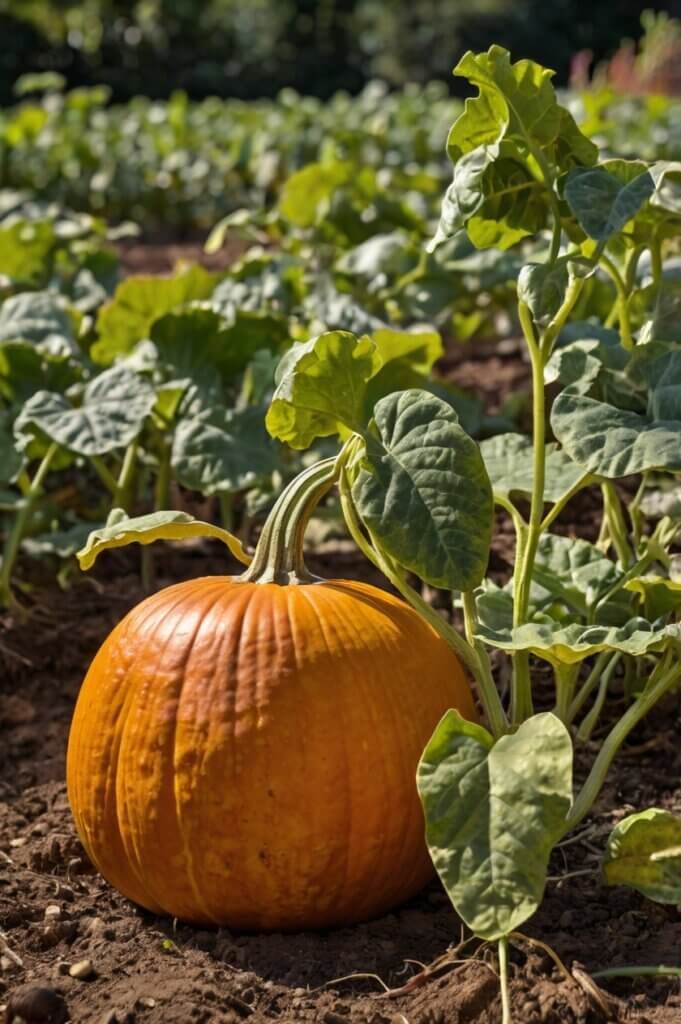
Soil preparation
The foundation of successful pumpkin growth starts with the soil.
Pumpkins thrive in rich, well-drained soil with a pH between 6.0 and 6.8.
Start by testing your soil to determine its nutrient levels.
If the soil is lacking, add organic matter such as compost or well-rotted manure to enhance fertility.
Loosen the soil to a depth of at least 12 inches to allow roots to grow freely.
Pro tip: Aim for soil temperatures of at least 65°F before planting. This helps seeds germinate faster and ensures healthier seedlings.
Planting techniques
When it comes to planting, timing is everything.
Pumpkins are highly sensitive to frost, so wait until the last frost date has passed.
Plant seeds directly into the soil in small mounds, about 3-5 seeds per hill, spaced 4-8 feet apart depending on the variety.
Cover seeds lightly with soil and water them immediately. Once seedlings emerge, thin them to 2-3 of the healthiest plants per hill to ensure optimal growth.
Watering and fertilizing
Pumpkins need plenty of water to thrive!
Aim to water deeply, providing about 1-2 inches per week.
Focus on watering at the base of the plants to keep the leaves dry and reduce the risk of fungal diseases.
As your pumpkin plants grow, feed them with the right nutrients:
- Early growth: Use a balanced fertilizer rich in nitrogen to support healthy vines and leaves.
- Flowering and fruit development: Switch to a fertilizer higher in phosphorus and potassium to help flowers bloom and pumpkins grow.
Pest and disease prevention
Pumpkins can face challenges from pests and diseases, but with a little care, you can protect your plants.
- Pest control: Watch out for squash bugs and cucumber beetles. Floating row covers can help shield your plants during their early stages.
- Disease prevention: Powdery mildew is a common issue, but proper spacing between plants improves airflow and helps prevent it. If needed, use organic fungicides to manage the problem.
Summer: Growth and Support
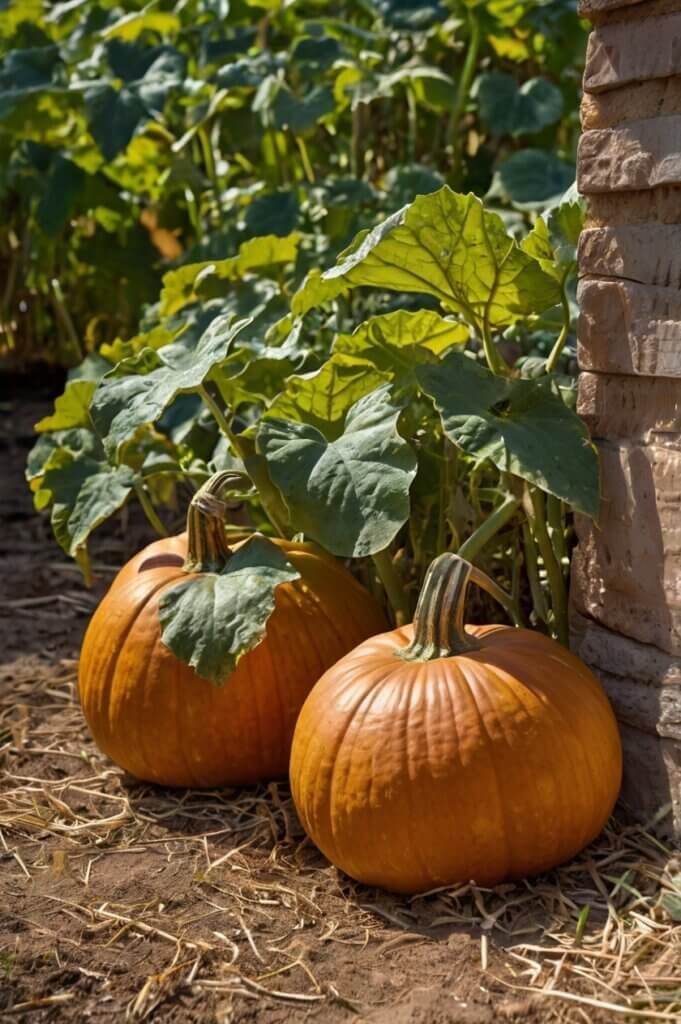
Watering and fertilizing
As summer temperatures rise, keeping your pumpkins well-watered is essential.
Deeply water the plants twice a week to ensure the soil stays moist.
Adding mulch around the base helps lock in moisture and keeps the soil cooler during hot days.
To encourage healthy growth, fertilize every two weeks with a balanced fertilizer. This provides the nutrients your plants need to thrive.
Supporting the vines
Pumpkin vines can stretch up to 20 feet, taking over your garden if left unchecked.
Gently guide the vines to prevent overcrowding and reduce the risk of rot.
For smaller pumpkin varieties, you can use trellises to save space and improve air circulation, helping the plants stay healthy.
Pollination
Pumpkins rely on bees and other pollinators to develop fruit.
To attract more pollinators, plant bee-friendly flowers nearby and avoid using pesticides while the plants are flowering.
If you notice fewer pumpkins forming, you can try hand-pollinating.
Use a small brush to transfer pollen from the male flowers to the female flowers to improve the fruit set.
Weed control
Weeds compete with pumpkins for water and nutrients, so keeping them in check is crucial.
Mulch not only helps retain moisture but also suppresses weed growth.
For any stubborn weeds, hand-pull them carefully to avoid disturbing the shallow roots of your pumpkin plants.
Fall: Fruit Development and Harvest
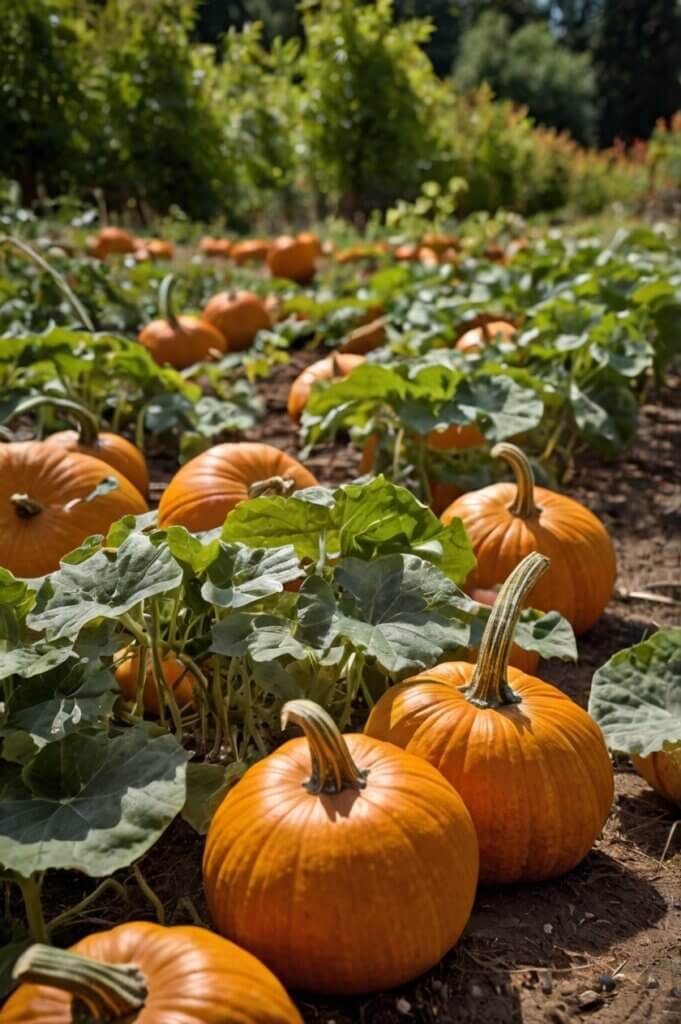
Monitoring fruit development
As fall approaches, your pumpkins will begin to take shape and show their true colors.
To protect them from rot, place them on a dry surface like cardboard or straw instead of leaving them on damp soil.
Occasionally rotate the fruits to ensure they grow evenly and develop a consistent color.
Harvesting techniques
Your pumpkins are ready to pick when their rinds feel hard and their color is fully developed.
To harvest:
- Use pruning shears or a sharp knife to cut the stem, leaving 2-4 inches of stem attached. This helps extend their storage life.
- Handle pumpkins carefully and avoid lifting them by the stem, as it can snap off and shorten their lifespan.
Curing pumpkins
Curing your pumpkins can make them last longer. Place them in a warm, dry spot (around 80-85°F) for about 10 days.
This process hardens the skin and reduces the risk of rot during storage.
After curing, store your pumpkins in a cool, dark place with temperatures between 50-55°F.
Proper storage ensures they stay fresh and ready for use in recipes, decorations, or fall festivities.
Winter: Preparing for the Next Season
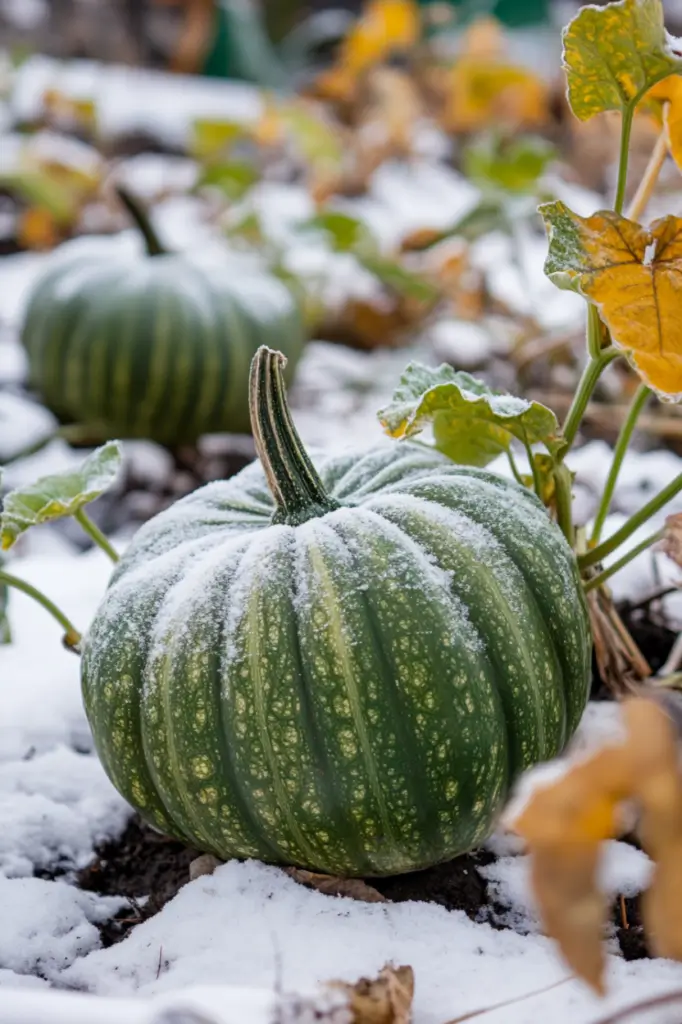
Cleaning up debris
At the end of the growing season, it’s important to clear away any leftover plant material.
This helps prevent pests and diseases from lingering in your garden over the winter.
Compost healthy plant debris but throw away anything that shows signs of disease to avoid spreading it next season.
Soil amendments
Winter is the ideal time to give your soil a nutrient boost.
Add organic materials like compost or well-aged manure to replenish nutrients lost during the growing season. You can also plant cover crops, such as clover or rye, which naturally improve soil health and structure, making it ready for spring planting.
Seed saving
If you’ve grown heirloom pumpkins, consider saving seeds for next year. Here’s how:
- Scoop out the seeds from a fully ripened pumpkin.
- Rinse them thoroughly to remove any pulp.
- Spread them out to dry completely in a cool, dry place.
Once dried, store the seeds in an airtight container in a cool, dark spot.
Properly stored seeds can remain viable for planting in the next season, giving you a head start with your favorite pumpkin varieties.
Final Thoughts
Growing pumpkins is a year-round endeavor, but the rewards are worth the effort.
With proper care through each season, you’ll enjoy healthy, vibrant pumpkins perfect for carving, cooking, or decorating.
Remember, every garden is unique, so adjust these tips based on your local climate and soil conditions.

